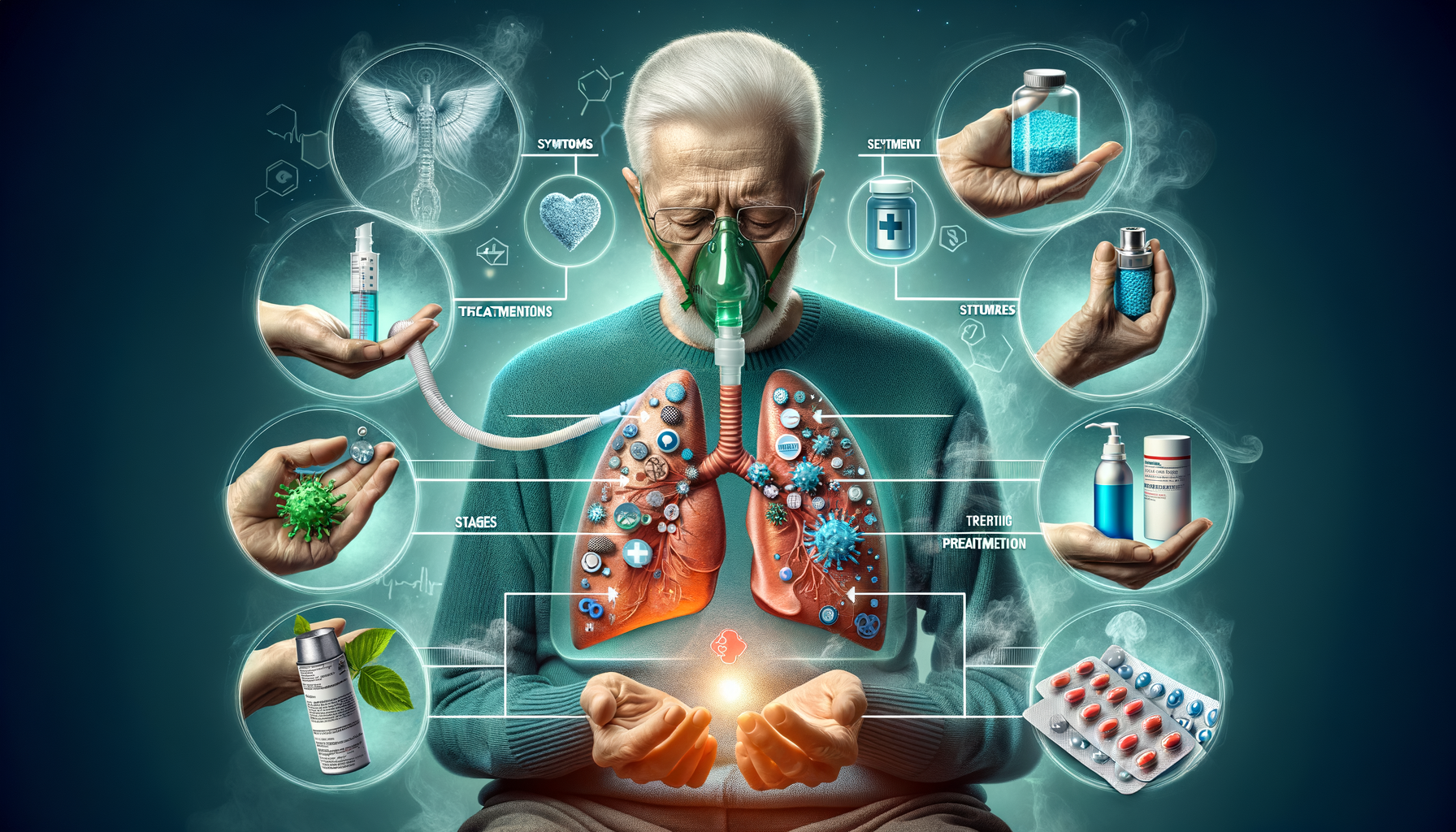Introduction to COPD in the Elderly
Chronic Obstructive Pulmonary Disease (COPD) is a progressive lung condition that significantly affects the elderly population. As a leading cause of morbidity and mortality worldwide, understanding its stages and symptoms is crucial for effective management. COPD is characterized by persistent respiratory symptoms and airflow limitation due to airway and/or alveolar abnormalities. In the elderly, it presents unique challenges due to age-related physiological changes and comorbidities.
The importance of recognizing COPD symptoms early cannot be overstated. Early diagnosis and treatment can slow disease progression, improve quality of life, and reduce the risk of serious complications. As we delve into the specifics of COPD in the elderly, it becomes clear how vital it is to address this condition with a comprehensive approach.
Stages of COPD in the Elderly
Understanding the stages of COPD is essential for tailoring treatment plans for elderly patients. The Global Initiative for Chronic Obstructive Lung Disease (GOLD) classifies COPD into four stages based on the severity of airflow limitation:
- Stage 1: Mild COPD – Characterized by minor airflow limitation. Often, symptoms like chronic cough and sputum production are overlooked as normal aging signs.
- Stage 2: Moderate COPD – More pronounced symptoms such as shortness of breath during exertion. Many patients seek medical attention at this stage due to increased difficulty in daily activities.
- Stage 3: Severe COPD – Further reduction in airflow and exacerbation of symptoms. Quality of life is significantly impacted, with frequent exacerbations and hospital visits.
- Stage 4: Very Severe COPD – Also known as end-stage COPD, where symptoms are constant and debilitating. Oxygen therapy becomes a necessity, and the risk of respiratory failure is high.
Each stage requires a different management strategy, emphasizing the need for regular monitoring and adjustment of treatment plans to address the evolving nature of the disease.
Symptoms of COPD in the Elderly
The symptoms of COPD can vary widely among elderly individuals, often overlapping with other age-related conditions. Common symptoms include:
- Chronic cough – Often the first symptom, initially mild but progressively worsening.
- Increased mucus production – The body produces more sputum, which can lead to frequent throat clearing.
- Shortness of breath – Particularly noticeable during physical activity, but can also occur at rest in advanced stages.
- Wheezing – A whistling sound during breathing, indicating narrowed airways.
- Fatigue – Due to reduced oxygen levels, leading to decreased energy and endurance.
These symptoms can be exacerbated by factors such as smoking, environmental pollutants, and respiratory infections. Early recognition and management of symptoms are crucial in preventing further deterioration.
Treatment Options for Elderly COPD Patients
Treating COPD in the elderly involves a multifaceted approach tailored to the individual’s stage of disease and overall health status. Key treatment options include:
- Medications – Bronchodilators and corticosteroids are commonly prescribed to alleviate symptoms and reduce inflammation.
- Oxygen therapy – Essential for patients with severe COPD to maintain adequate oxygen levels.
- Pulmonary rehabilitation – A program combining exercise, education, and support to improve physical and emotional well-being.
- Lifestyle modifications – Smoking cessation, a healthy diet, and regular physical activity are crucial in managing COPD effectively.
In some cases, surgical interventions such as lung volume reduction surgery or lung transplantation may be considered. The goal of treatment is to slow disease progression, reduce symptoms, and enhance the patient’s quality of life.
Conclusion: Managing COPD in the Elderly
Managing COPD in the elderly requires a comprehensive approach that considers the unique challenges posed by aging. Early diagnosis and intervention are key to improving outcomes and maintaining independence. By understanding the stages and symptoms of COPD, caregivers and healthcare providers can better support elderly patients in managing this chronic condition.
Continued research and education are vital in advancing treatment options and improving the quality of life for those affected by COPD. As we strive to provide better care for the elderly, awareness and proactive management of COPD remain essential components of healthcare.




Leave a Reply